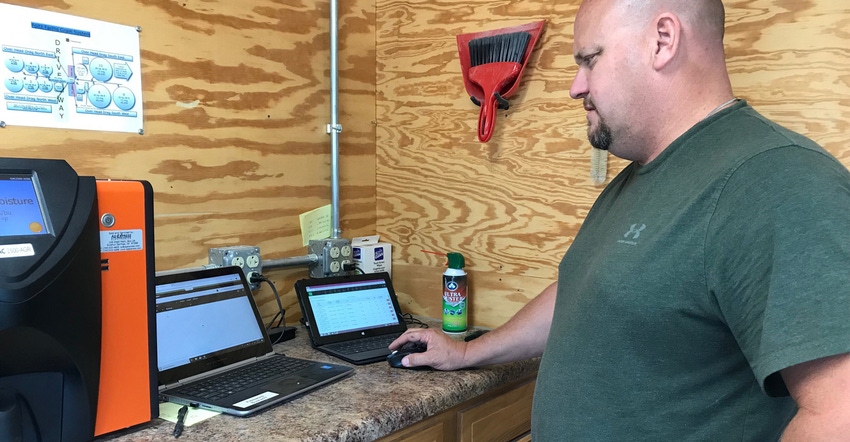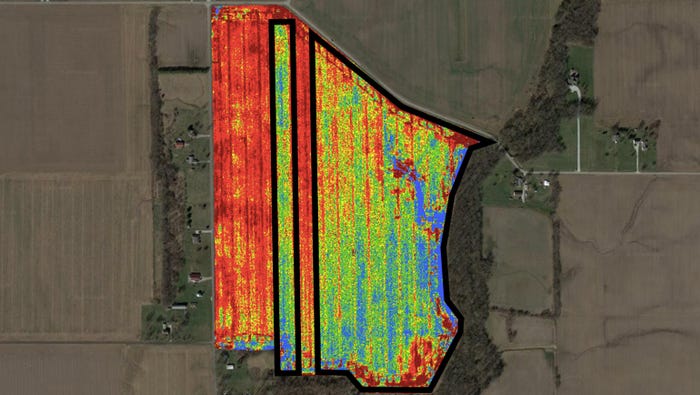
Jason Foltz and his family overcame weather challenges to harvest impressive corn yields in 2018. Reaching 200-plus bushels per acre didn’t seem likely on two large fields in early summer after hail pelted the crop.
“Someone said it looked like pencils in the field,” observes Foltz, Shelbyville, Ind. He farms with his brother Dan, with help from their dad, Bob. “Leaves were shredded, and it was just under knee-high. It looked like a mess.”
Someone suggested spraying a fungicide. Others scoffed, Foltz recalls. They typically apply fungicides before or at pollination, and had never applied a fungicide at early growth stages, he explains.
After deciding to spray, someone suggested leaving part of one of the fields unsprayed to see if there was a difference.
“That sounded like a good idea,” Jason says. “We made one pass as a check strip in the area we didn’t spray. We wanted to see if it made a difference worth paying for doing it.”
The corn was sprayed with Priaxor fungicide from BASF. While cost varies, BASF spokespeople say product cost alone at labeled rate should be $12 to $14 per acre. Knowing they had to at least recover fungicide and application costs was part of the reason for hesitating on the application, Foltz says.
True test
When the combine went through the field this fall, Foltz was pleased. Despite significant hail damage, the field where he sprayed part of the acreage with fungicide averaged more than 230 bushels per acre.
“The areas where we sprayed fungicide looked better all year,” he says. “Those areas definitely yielded more, although it’s difficult to put a number on it. There was clearly a significant yield advantage.”
The strip where fungicide was applied surrounded by untreated corn drove the point home. It looked like a rectangular island on the yield map, painted in green vs. red. “It stands out for sure,” Foltz says. “There was a striking difference.”
 YIELD MAP TELLS STORY: Jason Foltz notes that the right half of the yield map with greenish colors, indicating better yield, was sprayed with a fungicide 10 to 11 days after a hailstorm damaged the crop. Only one strip on the left half was sprayed. It’s the striking greenish strip surrounded by reddish colors, which indicate lower yield.
YIELD MAP TELLS STORY: Jason Foltz notes that the right half of the yield map with greenish colors, indicating better yield, was sprayed with a fungicide 10 to 11 days after a hailstorm damaged the crop. Only one strip on the left half was sprayed. It’s the striking greenish strip surrounded by reddish colors, which indicate lower yield.

Foltz wasn’t the only farmer who tried spraying fungicide to help injured corn this year. The operator of the Corn Watch ’18 plot, also in central Indiana, made the same decision. The Corn Watch ’18 field and a field next to it were hit by hail at V4.
While spraying a planned postemergence herbicide and noticing where hail damage intensified in the field next to the Corn Watch ’18 field, the grower decided to add fungicide in the tank. Although he didn’t leave a check strip, he is confident that adding fungicide on corn with the most damage returned more than enough yield to break even. He saw enough difference that he would do it again.
Foltz may even try it on some acres that aren’t damaged in 2019. “We only used it on corn hit by hail, so we don’t know if it would have benefited corn which didn’t get hail,” he concludes.
About the Author(s)
You May Also Like




